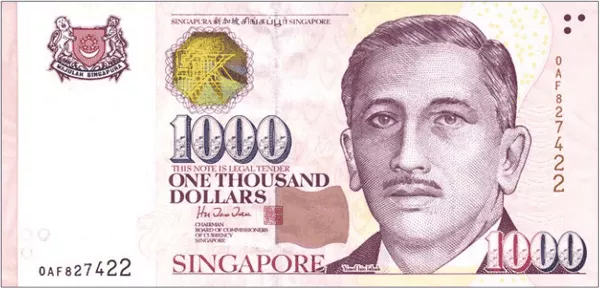Singapore is a Southeast Asian island country that boasts of a thriving economy, impressive infrastructure, and an excellent standard of living. As a global business hub, Singapore has attracted investors from all over the world who have helped to build a robust financial sector. In this article, we will explore the currency used in Singapore, its history, and its current status.
The History of Singapore’s Currency:
Before independence in 1965, Singapore was a British colony. The Straits Settlements, which included Singapore, used the Indian rupee as their primary currency. In 1939, the Straits Settlements issued its currency called the Straits dollar. After World War II, the British Malaya and British Borneo territories adopted a common currency called the Malayan Union dollar. When Singapore joined the Federation of Malaya in 1963, it adopted the Malaysian dollar as its official currency.
However, after only two years, political differences between Singapore and Malaysia led to Singapore’s separation from Malaysia in 1965. This event prompted the Singapore government to establish its currency, the Singapore dollar (SGD), on June 12, 1967. The SGD replaced the Malaysian dollar at par, with one SGD equaling one Malaysian dollar. The new currency had a fixed exchange rate with the US dollar, and this peg remained in place until 1973.
The Modern-Day Singapore Dollar:
Today, the SGD is one of the most traded currencies globally, with a daily average trading volume of over USD $300 billion. It is also widely accepted in neighboring countries like Brunei and parts of Malaysia, particularly Johor Bahru, which is located just across the causeway from Singapore.
The Monetary Authority of Singapore (MAS) is responsible for the management of monetary policy, issuance of currency notes and coins, and the regulation of financial institutions. To maintain price stability, the MAS employs a managed float exchange rate regime, where the SGD is allowed to fluctuate against a basket of currencies within an undisclosed policy band. This system allows the MAS to adjust the SGD’s value according to Singapore’s economic fundamentals.
Features of Singapore Dollar:
The Singapore dollar has several features that make it unique. The currency notes are printed on polymer instead of paper, which makes them more durable and difficult to counterfeit. The polymer notes also have additional security features such as transparent windows, holographic patches, and color-changing ink. These measures make it challenging for counterfeiters to reproduce the notes accurately.
The SGD comes in denominations of $2, $5, $10, $50, $100, $1,000 and $10,000. Coins come in 5, 10, 20, and 50 cents denomination, as well as a one-dollar coin.
The SGD’s value is influenced by a range of factors, including Singapore’s economic growth, inflation rates, interest rates, and global financial developments. During periods of economic growth, the SGD tends to appreciate, while during an economic downturn, it may depreciate. The SGD’s exchange rate is closely monitored by traders, investors, and businesses looking to invest in or do business with Singapore.
Conclusion:
In summary, the Singapore dollar is the official currency of Singapore and is managed by the Monetary Authority of Singapore. The currency was established after Singapore’s separation from Malaysia in 1965 and has since become one of the most traded currencies globally. The SGD’s value is influenced by various factors and is allowed to fluctuate within a managed float exchange rate regime. With its advanced security features and durability, the SGD remains a robust and reliable currency for both locals and visitors to Singapore.


